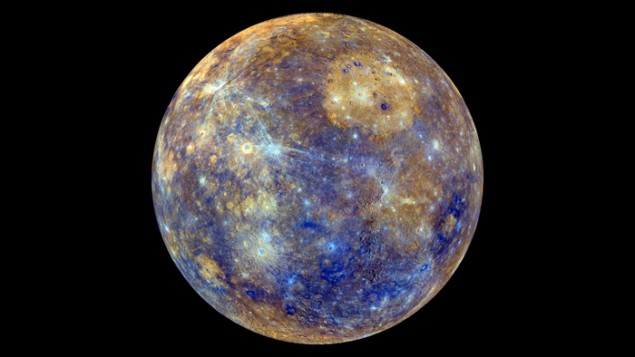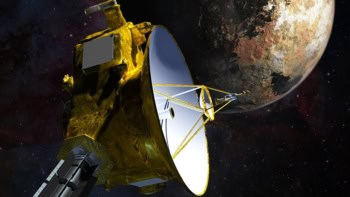
Mercury’s high density and large iron content could have been caused by magnetically excited collisions within part of the Sun’s protoplanetary disc, suggests new research from scientists at the American Museum of Natural History. These collisions could have knocked off the rocky, non-magnetic parts of the dust grains, leaving behind iron-enriched material from which Mercury could have formed.
Compared with the other rocky planets in the solar system, Mercury is unusually dense. The planet is estimated to contain about 70% iron by mass, compared with the near-30% values attributed to Earth and Venus. First acknowledged almost half a century ago, this peculiarity is an enduring puzzle. Explanations for the anomalously high iron content are varied, with popular theories including the removal of silicates from the surface of the young Mercury by a giant impact, or evaporation within a hot solar nebula.
Puzzling potassium
Recent measurements taken by NASA’s MESSENGER spacecraft, however, appear to have ruled out many of these models, including the evaporation hypothesis. Any such evaporation of silicates would require high enough temperatures to also remove potassium – a result that contrasts with the terrestrial potassium/thorium ratios MESSENGER has measured. While the giant-impact hypothesis remains viable – provided that the displaced material did not amass again onto the planet’s surface – some newer theories propose instead that Mercury’s iron enrichment might have occurred very early in its history, when tiny dust grains in the protoplanetary disc initially combined to form larger boulders and planetesimals.
In the new work, astrophysicist Alexander Hubbard proposes one such model. “In the solar nebula, at the position that Mercury now occupies, the ambient magnetic field was surprisingly strong,” he says. A narrow window exists in which the temperature is hot enough to support an amplified magnetic field – brought about by the differential rotation of the inner and outer parts of the protoplanetary disc – and yet cool enough to lie below iron’s Curie temperature. Here, the field would have been sufficient to magnetically saturate the iron-rich grains, causing them to violently smash together. “These collisions could have knocked off the rocky bits of the dust grains, in a process we name ‘magnetic erosion’,” says Hubbard. “The surviving iron-rich dust would have gone on to form Mercury.”
Lost silicates
In contrast – along with being stripped from the growing iron grains – the silicate-rich particles would be prevented from combining because of the negative charge they accumulate, he proposes, which would cause them to repel each other. Iron-rich particles – which can rearrange their charges – do not experience this limitation. Unable to accumulate at the same rate as the iron, the silicates would eventually be lost to the host star. According to Hubbard, the very limited area in which magnetic erosion could occur explains why similar levels of iron enrichment are not seen in our solar system’s other rocky planets.
Magnetic erosion is “certainly an interesting idea”, says Hannah Jang-Condell, an astronomer from the University of Wyoming who was not involved in this study. Jang-Condell expresses concern, however, about the temperatures required for the erosion to take place – at around 1000 K, this would be “fairly close to the sublimation temperature for silicate grains (∼1500 K)…[giving] a very narrow range of radii in which this effect could take place”. In addition, she notes, typical models of protoplanetary discs around Sun-like stars only produce temperatures as high as 1000 K at Mercury’s orbital radius in young, rapidly accreting systems – leaving questions as to whether the discs’ cooling would leave enough time for magnetic erosion to occur.
Steven Desch, a theoretical astrophysicist at Arizona State University who was also not involved in the study, also has reservations. “[The paper] assumes dust grains have high electric charges that prevented them from approaching each other, but in reality dust in the solar nebula was probably electrically neutral,” he says, explaining that, if that were the case, grains would stick together regardless of their magnetism. “Collisional stripping of Mercury’s silicate mantle remains a viable, and the most probable, mechanism for explaining its high core mass,” he says.
The research is described in the journal Icarus.



